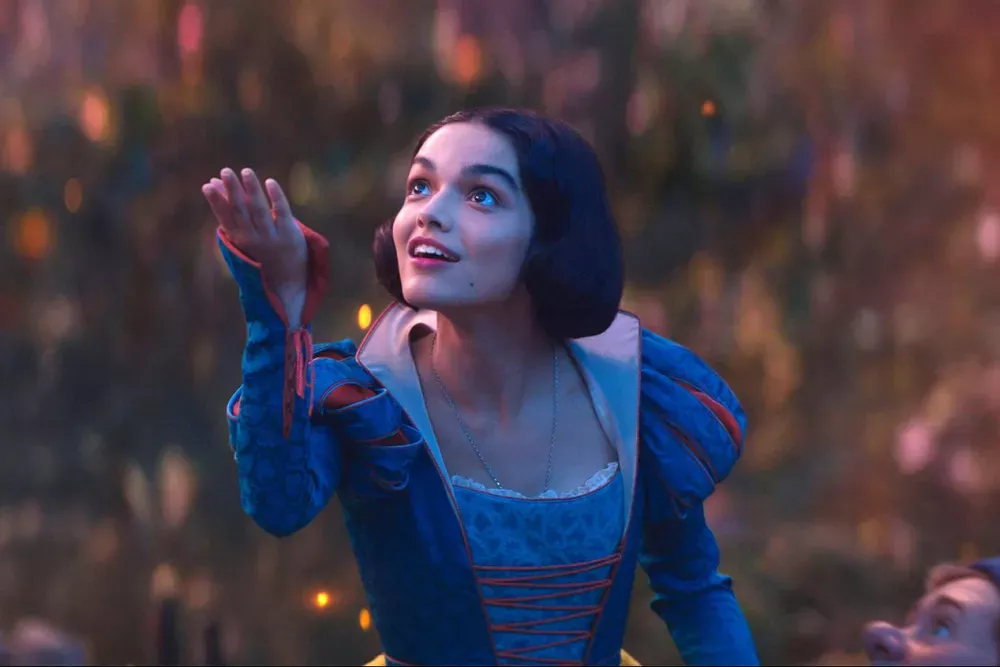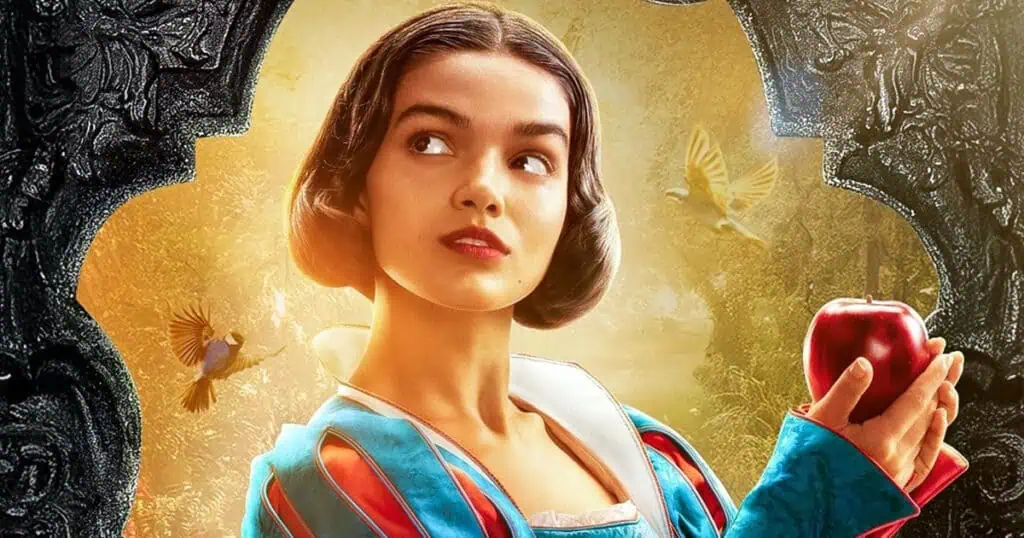In the annals of film history, few productions have had as profound an impact as Walt Disney’s “Snow White and the Seven Dwarfs.” Released in 1937, this groundbreaking animated feature was not only a triumph of artistic vision but also a monumental success at the box office. As someone who has had the privilege of exploring the depths of Disney’s archives and speaking with historians and animators who have chronicled its storied history, I can offer a unique perspective on the film’s creation, its financial achievements, and its enduring legacy.
Table of Contents
- Introduction: A Landmark in Animation
- The Genesis of Snow White: Walt Disney’s Vision
- Production Challenges and Innovations
- Initial Reception and Box Office Success
- The Role of Re-releases and Inflation
- Cultural Impact and Influence on Animation
- Merchandising and Brand Expansion
- Restoration and Preservation Efforts
- Legacy and Influence on Modern Filmmaking
- Conclusion: Snow White’s Place in History
Introduction: A Landmark in Animation
“Snow White and the Seven Dwarfs” holds the distinction of being the world’s first full-length animated feature film. At a time when animation was primarily relegated to short films and cartoons, Walt Disney’s ambitious project forever changed the landscape of cinema. The film’s success demonstrated the viability of animation as a serious art form and set the stage for Disney to become a dominant force in the entertainment industry.
Beyond its artistic achievements, “Snow White and the Seven Dwarfs” was a box office phenomenon. It became the highest-grossing film of its time, and its financial success laid the foundation for the Disney empire. The film’s enduring popularity, bolstered by multiple re-releases, has made it an integral part of popular culture, influencing generations of filmmakers and animators.
The Genesis of Snow White: Walt Disney’s Vision

The idea for “Snow White and the Seven Dwarfs” stemmed from Walt Disney’s fascination with storytelling and his desire to push the boundaries of animation. Inspired by the Brothers Grimm fairy tale, Disney envisioned a feature-length animated film that could captivate audiences with its narrative depth and visual splendor.
During a visit to the Disney archives, I had the opportunity to examine Walt Disney’s original notes and sketches for the project. It was evident that Disney was deeply committed to creating a film that would elevate animation to new heights. His vision extended beyond technical innovation; Disney wanted to craft a story that resonated emotionally with audiences.
In the mid-1930s, Disney began assembling a team of skilled animators, artists, and writers to bring “Snow White” to life. He personally oversaw the project’s development, pushing his team to innovate and experiment with new techniques. Disney’s dedication to the film’s success was unwavering, even in the face of skepticism from industry insiders who dubbed the project “Disney’s Folly.”
Production Challenges and Innovations
The production of “Snow White and the Seven Dwarfs” was fraught with challenges, but it also gave rise to numerous innovations that would leave a lasting impact on the animation industry. One of the most significant challenges was the sheer scale of the project—a full-length animated film required an unprecedented level of detail and labor.
To achieve the film’s visual richness, Disney and his team developed new techniques and technologies. The use of the multiplane camera, for example, allowed for more complex and dynamic shots by creating a sense of depth through layered backgrounds. This innovation provided a more immersive experience for viewers and became a staple in animation.
Character animation also saw significant advancements during the production of “Snow White.” Disney’s animators focused on creating more lifelike and expressive characters, employing techniques such as rotoscoping to achieve realistic movement. The meticulous attention to detail in the characters’ expressions and gestures added emotional depth to the story.
During a conversation with an animation historian at an industry event, I learned about the rigorous process of color selection for the film. Disney’s team experimented with over 1,500 shades of paint to achieve the desired color palette. This dedication to visual storytelling was a testament to Disney’s commitment to excellence.
Initial Reception and Box Office Success
“Snow White and the Seven Dwarfs” premiered at the Carthay Circle Theatre in Los Angeles on December 21, 1937, to an audience that included Hollywood luminaries and critics. The film received a standing ovation, and its success was immediate and overwhelming. Critics hailed it as a masterpiece, praising its animation, music, and storytelling.
The film’s box office performance was equally impressive. By the end of its initial run, “Snow White” had grossed approximately $8 million worldwide—a staggering sum for the time. It became the highest-grossing film of its era, surpassing even live-action blockbusters.
During a visit to the Academy of Motion Picture Arts and Sciences, I had the opportunity to examine archival reviews and box office reports from the film’s original release. The enthusiasm and admiration for “Snow White” were palpable, with critics and audiences alike recognizing its groundbreaking achievements.
The film’s success was not just a financial boon for Disney; it was a validation of his vision and a testament to the potential of animation as a serious art form. Walt Disney received a special Academy Award for “Snow White” in 1939, consisting of one full-sized Oscar statuette and seven miniature ones—a fitting tribute to the film’s impact.
The Role of Re-releases and Inflation
The enduring box office success of “Snow White and the Seven Dwarfs” is not solely attributable to its initial release. The film’s continued re-releases over the decades have played a significant role in maintaining its financial dominance and cultural relevance.
Disney recognized early on the potential of re-releasing “Snow White” to new generations of audiences. The film was re-released in theaters multiple times, starting in 1944 and continuing through the 1990s. Each re-release introduced the film to a new audience, contributing to its cumulative box office gross.
When adjusted for inflation, “Snow White and the Seven Dwarfs” remains one of the highest-grossing films of all time. Its enduring popularity and financial success underscore the timeless appeal of its story and characters.
During a panel discussion on classic films I attended at the Turner Classic Movies festival, a film economist highlighted the significance of inflation-adjusted box office figures. “Snow White” serves as a prime example of how a film’s true box office impact can only be fully appreciated when considering the value of money across different eras.
Cultural Impact and Influence on Animation

The cultural impact of “Snow White and the Seven Dwarfs” extends far beyond its box office success. The film has become an integral part of popular culture, influencing generations of filmmakers, animators, and audiences.
“Snow White” established the template for future animated features, setting a high standard for storytelling, animation quality, and character development. Its success paved the way for Disney to produce a series of beloved classics, including “Cinderella,” “Sleeping Beauty,” and “The Little Mermaid.”
During a tour of Disney’s animation studios, I observed how the legacy of “Snow White” continues to inspire contemporary animators. The film’s influence can be seen in the meticulous attention to detail and storytelling that characterizes Disney’s modern productions.
Beyond its impact on animation, “Snow White” has become a cultural icon. The film’s characters, including Snow White, the Evil Queen, and the Seven Dwarfs, are instantly recognizable and have become symbols of Disney’s brand. The film’s music, including songs like “Heigh-Ho” and “Someday My Prince Will Come,” remains timeless.
For audiences who appreciate classic tales of love and friendship, the themes and storytelling of “Snow White” resonate with those found in romantic films like “Love, Rosie”: An Endearing Journey Through the Twists and Turns of Love and Friendship, which explore similar themes of enduring love and personal growth.
Merchandising and Brand Expansion
The success of “Snow White and the Seven Dwarfs” also marked the beginning of Disney’s foray into merchandising—a strategy that would become a cornerstone of the company’s business model. The film’s characters and imagery were licensed for a wide range of products, from toys and clothing to books and records.
Disney’s innovative approach to merchandising helped cement “Snow White” as a cultural phenomenon and laid the groundwork for the company’s future brand expansion. The film’s characters became some of the earliest examples of licensed merchandise, setting a precedent for the marketing of animated films.
During a conversation with a former Disney marketing executive, I learned about the strategic importance of merchandising for the company’s growth. “Snow White” demonstrated the potential for animated characters to become enduring brand icons, a concept that Disney has successfully leveraged with countless properties.
The film’s impact on merchandising can still be seen today, as Disney continues to produce and sell a wide range of “Snow White” products. The film’s characters remain popular among fans of all ages, and their enduring appeal is a testament to the film’s lasting influence.
Restoration and Preservation Efforts

As “Snow White and the Seven Dwarfs” approached its 50th anniversary in the 1980s, Disney undertook a significant restoration effort to preserve the film for future generations. The restoration process involved meticulous work to clean and repair the original animation cells and negatives, ensuring the film’s visual quality would remain intact.
During a visit to Disney’s digital restoration lab, I had the opportunity to witness firsthand the painstaking efforts involved in preserving classic animation. The restoration of “Snow White” was a labor of love, requiring both technical expertise and a deep appreciation for the film’s historical significance.
The restored version of “Snow White” was released on home video and later on DVD and Blu-ray, allowing new audiences to experience the film in its original glory. The restoration efforts ensured that “Snow White” would continue to be appreciated by future generations, maintaining its status as a beloved classic.
The preservation of “Snow White” is part of Disney’s broader commitment to maintaining its animation legacy. The company’s dedication to restoring and preserving its classic films reflects a deep respect for its history and a desire to share its artistic achievements with the world.
Legacy and Influence on Modern Filmmaking
“Snow White and the Seven Dwarfs” has left an indelible mark on the world of filmmaking, influencing not only animation but also live-action cinema. Its success demonstrated the potential of animation as a storytelling medium, inspiring countless filmmakers to explore the possibilities of the art form.
The film’s impact can be seen in the work of directors and animators who have cited “Snow White” as a major influence. From Hayao Miyazaki to Tim Burton, many of the industry’s most celebrated filmmakers have drawn inspiration from Disney’s pioneering work.
During a panel discussion on the history of animation at the Annecy International Animation Film Festival, a renowned animator spoke about the film’s influence on his career. “Snow White” showed me that animation could be more than just entertainment—it could be art,” he said.
The film’s legacy also extends to the business of filmmaking. “Snow White” demonstrated the viability of animated features as a commercially successful genre, paving the way for studios to invest in animation as a major part of their production slate.
In today’s streaming landscape, the influence of “Snow White” is evident in the continued popularity of animated content on platforms like Disney Plus and Netflix. For a deeper exploration of the streaming wars and how animation fits into the modern media landscape, our article on Netflix vs Disney Plus provides valuable insights.
Conclusion: Snow White’s Place in History
“Snow White and the Seven Dwarfs” stands as a monumental achievement in the history of cinema. Its artistic innovations, box office success, and cultural impact have left a lasting legacy that continues to resonate with audiences worldwide.
Walt Disney’s vision for “Snow White” revolutionized the animation industry and established Disney as a powerhouse in the entertainment world. The film’s enduring popularity, bolstered by multiple re-releases and merchandising efforts, has ensured its place in the pantheon of cinematic classics.
As we reflect on the film’s contributions to the art of animation and its influence on generations of filmmakers, we are reminded of the power of storytelling to transcend time and connect with audiences on a profound level.
For viewers who appreciate timeless tales of love and friendship, “Snow White and the Seven Dwarfs” remains a touchstone of cinematic magic. Its themes of love, sacrifice, and redemption resonate with the enduring appeal of stories like “Emily in Paris”: A Romantic Comedy Series that Can’t be Missed and “Most Popular Romance Series: “Culpa Mia”, which capture the universal human experience.
As we continue to celebrate the legacy of “Snow White,” we are reminded of the film’s enduring impact and the timeless magic of Disney storytelling. Whether experienced on the big screen, through home video, or via modern streaming platforms, “Snow White and the Seven Dwarfs” remains a testament to the power of imagination and the art of animation.
 TVReviewSpot Reviews, Ratings, and Where to Watch the Best Movies & TV
TVReviewSpot Reviews, Ratings, and Where to Watch the Best Movies & TV





